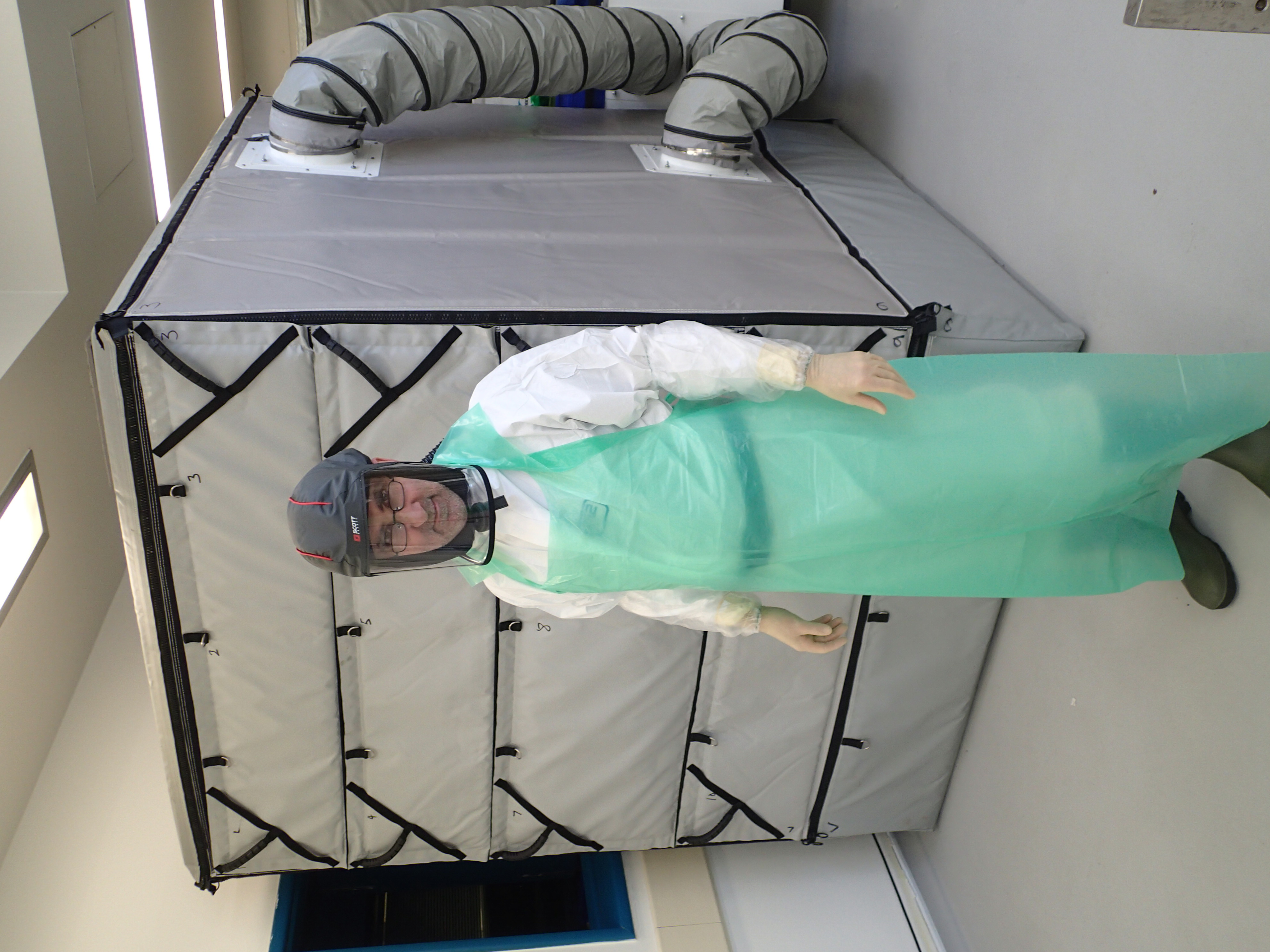Post mortem practice during a pandemic: identifying the indirect casualties of COVID 19
Robert Pell, SpR in Cellular Pathology, John Radcliffe Hospital, Oxford
 Regular readers of the BDIAP newsletter will probably agree that the elective placement opportunities provided by the society are one of the key highlights. Unfortunately my tale of interesting experience involved volunteering for redeployment to acute medicine at the John Radcliffe Hospital, Oxford. I had previously trained in medicine (obtaining my MRCP in 2010) and so ventured back to clinical practice for (hopefully) one last time.
Regular readers of the BDIAP newsletter will probably agree that the elective placement opportunities provided by the society are one of the key highlights. Unfortunately my tale of interesting experience involved volunteering for redeployment to acute medicine at the John Radcliffe Hospital, Oxford. I had previously trained in medicine (obtaining my MRCP in 2010) and so ventured back to clinical practice for (hopefully) one last time.
It became clear early on during the epidemic that COVID 19 incorporated a variety of clinical presentations that were not just restricted to fever, cough and dyspnoea. We were required to update ourselves on the clinical manifestations of this disease on an almost daily basis, and rapid dissemination of current practice occurred at an unprecedented rate. Although electronic resources were and continue to be a key resource in disseminating information widely and rapidly, traditional clinician to clinician contact was often the first way we discovered new disease manifestations. One example was a colleague forwarding a diabetes UK circular on COVID 19 presenting as newly diagnosed diabetic ketoacidosis published the day before we admitted our first case. Appreciation of the dramatic rise in mortality in patients with decompensated cirrhosis and COVID 19 came from bumping into a hepatology registrar on a ward round. Late skin manifestations (‘COVID toes’) were learnt from a conversation in the doctor’s mess. I was able to feed this clinical insight back to the department to help the service adapt during the epidemic: pathology certainly was not left behind!
The variety of clinical presentations prompted routine adoption of level 2 PPE for all sudden death cases with prior swabbing of bodies for COVID 19 PCR testing. Digital pathology was utilised in selected cases of known or highly suspected cases to answer specific questions. These included sampling lung tissue from areas of classical COVID 19 radiological changes and excluding additional pathology in the death of an inpatient with COVID 19. The number of coronial referrals for post mortem examination in Oxfordshire halved from the previous year, and limited examinations were performed in an increased number of cases. COVID 19 PCR testing in deceased individuals proved feasible and helped reduce exposure to mortuary staff and pathologists. Unexpected potential COVID cases proved to be the exception on review: this contrasted with cases where the history supported the societal lockdown as a potential contributory factor to death.
 In conjunction with Professor Ian Roberts, we undertook a post mortem case series review during the epidemic. This would determine whether post mortem reporting could identify additional deaths attributable to COVID 19 pandemic on a case by case basis. We found only 2 deaths resulting from undiagnosed COVID 19 during the 2 months following lockdown. However, there were frequent cases where the lockdown was a contributory factor to death. Disrupted access to regular medical services was the commonest factor identified, with examples of potentially avoidable out-of-hospital deaths due to acute myocardial infarction and diabetic ketoacidosis; the patients had contacted medical services several days prior to death and been advised to self-isolate at home rather than attending hospital. The second commonest factor identified was instances of suicide with a lockdown relationship. COVID-related financial difficulties and increased workload pressures were identified from suicide notes and collateral history from family and friends of the deceased. Fortunately, only a limited number of deaths occurred in those shielding with pre-existing medical conditions. This suggests that local community support networks were effective in our area.
In conjunction with Professor Ian Roberts, we undertook a post mortem case series review during the epidemic. This would determine whether post mortem reporting could identify additional deaths attributable to COVID 19 pandemic on a case by case basis. We found only 2 deaths resulting from undiagnosed COVID 19 during the 2 months following lockdown. However, there were frequent cases where the lockdown was a contributory factor to death. Disrupted access to regular medical services was the commonest factor identified, with examples of potentially avoidable out-of-hospital deaths due to acute myocardial infarction and diabetic ketoacidosis; the patients had contacted medical services several days prior to death and been advised to self-isolate at home rather than attending hospital. The second commonest factor identified was instances of suicide with a lockdown relationship. COVID-related financial difficulties and increased workload pressures were identified from suicide notes and collateral history from family and friends of the deceased. Fortunately, only a limited number of deaths occurred in those shielding with pre-existing medical conditions. This suggests that local community support networks were effective in our area.
Our review had some limitations, notably that as a single centre our findings may not be representative of the nation as a whole. We were not able to determine whether deaths involving drug and alcohol misuse could be linked to the lockdown on a case-by-case basis, suggesting overall death registry statistics are a more appropriate source of information. Medium term increases in mortality due to restrictions on access to cancer services and other chronic diseases are unsuitable for assessment from post mortem report data.
Our review demonstrated how post mortem services can adapt and continue to function despite restrictions imposed by disease epidemics in developed nation healthcare systems. The coronial post mortem process continues to provide high quality information on circumstances of individual deaths despite the arrival of COVID 19. Pathologists have a vital role to play in ensuring healthcare and social care policy can adapt to this ongoing pandemic.